Welcome to my guide to the best lenses for the Sony A7 III full frame mirrorless camera in 2025.
With over 200 E-mount lenses available from Sony and third parties like Tamron and Sigma, choosing a lens for your A7III can be quite the challenge!
To save you the trouble I’ve picked 13 of the best Sony E-mount lenses available today and summarised them in this article.
If you’d like to view all of the E-mount lenses available then please visit my Complete List of Sony E-mount Lenses where I also list the latest firmware update for each lens.
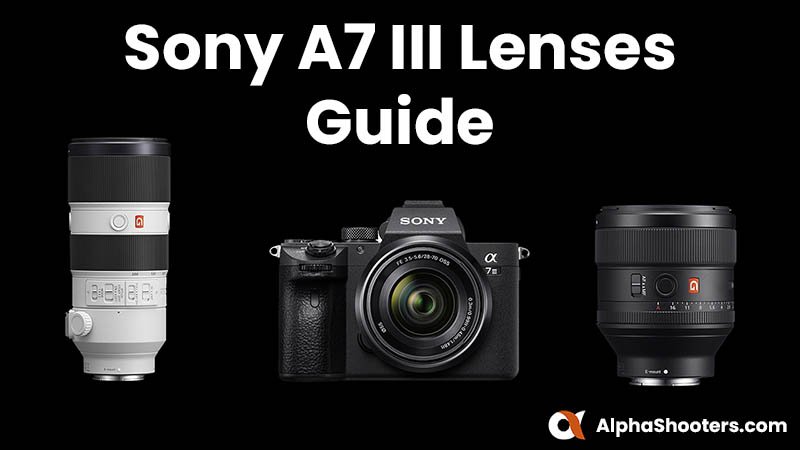
Table of Contents[Hide][Show]
- Compatible Lenses
The Best Lenses To Buy for the A7III+−
- 1. Sony FE 16-35mm F2.8 GM II
- 2. Sony FE 24mm F1.4 GM
- 3. Sony FE 20-70mm F4 G
- 4. Sony FE 24-70mm F2.8 GM II
- 5. Sony FE 24-105mm F4 G OSS
- 6. Tamron 28-75mm F2.8 Di III VXD G2
- 7. Sony FE 85mm F1.4 GM II
- 8. Sony FE 90mm F2.8 Macro G OSS
- 9. Sony FE 135mm F1.8 GM
- 10. Sony FE 70-200mm F4 Macro G OSS Ⅱ
- 11. Sony FE 70-200mm F2.8 GM OSS II
- 12. Tamron 70-180mm F2.8 Di III VC VXD G2
- 13. Sony FE 200-600mm F5.6-6.3 G OSS
- Additional Lens Guides
- Complete List of Sony E-mount Lenses & Latest Firmware
- Camera & Lens Deals
- Sony A7 III Guides & Resources
- Sony Lens Abbreviations
- Before You Go
Sony A7III Forum & Facebook Group
If you are looking for further help and advice on the A7III or would simply like to share your photos, then please head over to our friendly full-frame Forum. If you prefer Facebook then I also run the Sony A7III Shooters Group.
Compatible Lenses
The Sony A7III has a 35mm full-frame sensor and features Sony’s E-mount.
It’s compatible with Sony E-mount Full-Frame lenses and also APS-C lenses when used in Super35 / APS-C mode.
Lenses from other manufactures such as Canon can also be used providing you use an appropriate lens adapter.
However, native Sony E-mount lenses will always offer the best autofocus performance compared to adapted lenses.
The Best Lenses To Buy for the A7III
With over one hundred E-mount lenses to choose from including E-mount lenses from third-parties, buying a lens for the Sony A7 III can be quite a daunting experience.
I’ve therefore narrowed your choices down to 13 of the best lenses available today. This includes some third-party lenses that should definitely not be overlooked.
If you wish to view every single E-mount lens then please visit my Complete Sony E-Mount Lenses List.
1. Sony FE 16-35mm F2.8 GM II
If you are looking for the best possible wide-angle zoom lens for your A7 III then you don’t need to look any further than the Sony FE 16-35mm F2.8 GM II
This lens excels in a variety of photography styles that benefit from a wider field of view, including landscapes, astrophotography, real estate, and architectural photography.
At just 547g, the Mark II version is 133g lighter than the original Mark I. As expected from Sony’s G Master series, the build quality is outstanding. It features 15 elements arranged in 12 groups and is weather-sealed to protect against dust and moisture.
With 11 circular aperture blades, this lens delivers beautifully smooth bokeh and impressive sunstars. The autofocus is both fast and silent, and the sharpness remains excellent across the entire frame.
I owned the Mark I version in the past but sold it due to limited time for landscape photography. However, if I were in the market for a wide-angle lens today, the Mark II would be my top choice without hesitation.
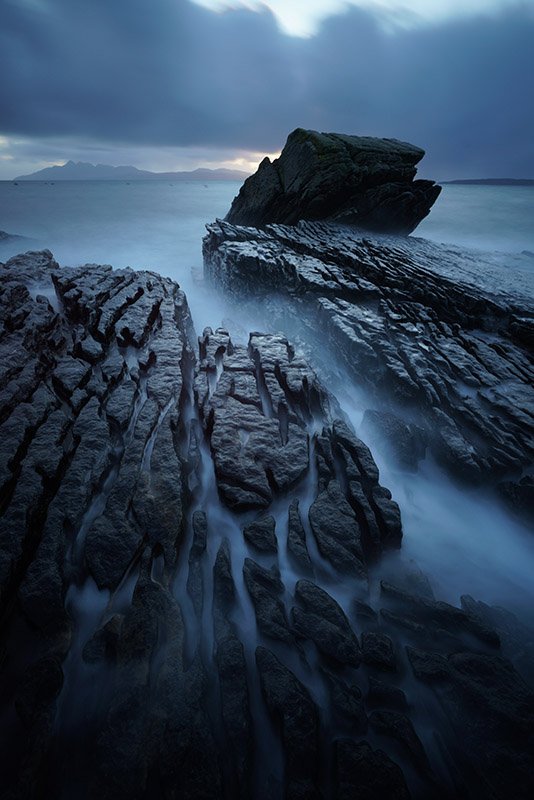
Key Specs
| Model Name: | SEL1635GM2 |
| Format: | 35 mm full frame |
| Focal Length (mm): | 16-35 mm |
| Angle of View (35 mm): | 107°–63° |
| Maximum Aperture: | F2.8 |
| Minimum Aperture: | F22 |
| Lens Groups / Elements: | 12–15 |
| Aperture Blades: | 11 circular |
| Minimum Focusing Distance: | 8.7″ / 22.1 cm |
| Maximum Magnification Ratio: | 0.32x |
| Lens Image Stabilization: | No |
| Filter Diameter: | 82 mm |
| 120 FPS Support: | Yes |
| Diameter: | 3.5″ / 87.8 mm |
| Length: | 4.4″ / 111.5 mm |
| Weight: | 547g / 19.29 oz |
Pros
- Fantastic sharpness across the frame
- Beautiful sunstars
- Very little coma and distortion
- Well controlled chromatic aberration
Cons
- Price
What’s in the Box
- Sony FE 16-35mm F2.8 GM II lens
- Hood (model): ALC-SH177
- Lens front cap: ALC-F82S
- Lens rear cap: ALC-R1EM
- Padded case
Review
To learn more about this lens I’d recommend watching the below video from Arthur R. To learn more the previous Mark I version then our review from Nick Hanson is worth a read.
2. Sony FE 24mm F1.4 GM
When Sony created the FE 24mm F1.4 GM lens they proved that you can build an excellent lens with stunning optics in a very small package.
This lens is constructed of 13 elements in 10 groups and is extremely well built, as it should be for a G Master (GM) lens. It’s also weather sealed against dust and moisture and weighs in at only 15.7 oz (445 g).
On the lens itself you will find a focus hold button that can be customized, an AF on/off switch, an aperture selection ring and a click on/off switch for the aperture ring.
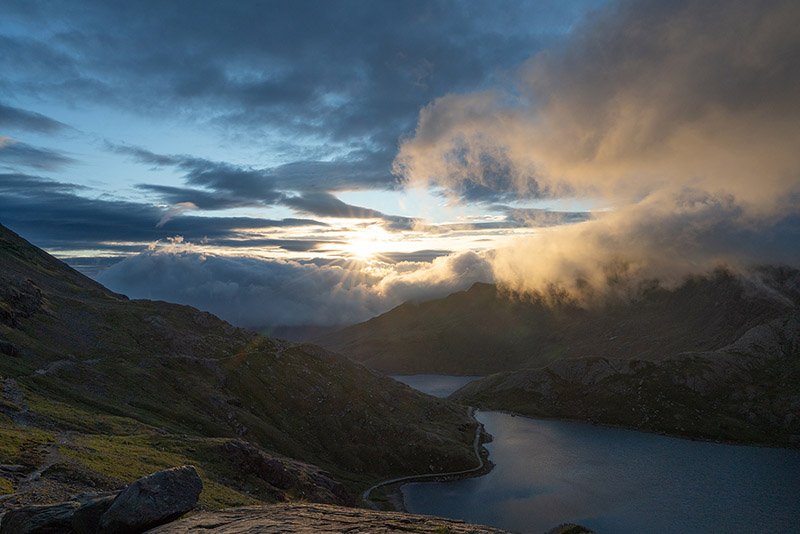
This lens is extremely sharp across the frame even when wide open at its maximum aperture of f/1.4. Distortion is well controlled as is the coma making this a great lens for astro photography.
The bokeh is silky smooth and possibly the best of all the current 24mm f/1.4 lenses available. Autofocus is fast, quiet and super accurate.
24mm is an excellent focal length for many subjects including: architecture, wedding and event photography, street photography, astrophotography and even environmental portraits.
I also own this lens myself and absolutely love it. It’s one lens that I can’t see myself letting go of anytime soon.
Key Specs
| Model Name: | SEL24F14GM |
| Format: | 35 mm full frame |
| Focal Length (mm): | 24 mm |
| Angle of View (35 mm): | 84° |
| Maximum Aperture: | F1.4 |
| Minimum Aperture: | F16 |
| Lens Groups / Elements: | 10-13 |
| Aperture Blades: | 11 circular |
| Minimum Focusing Distance: | 0.79 ft (0.24 m) |
| Maximum Magnification Ratio: | 0.17x |
| Lens Image Stabilization: | No |
| Filter Diameter: | 67 mm |
| Diameter: | 3″ / 75.4 mm |
| Length: | 3 3/4″ / 92.4 mm |
| Weight: | 15.7 oz (445 g) |
Pros
- Very sharp across the frame wide open
- Beautiful bokeh
- Size & weight
- Aperture ring
- Fast autofocus
Cons
- Strong vignetting wide open
- Flare resistance
What’s in the Box
- Sony FE 24mm F1.4 GM lens
- Hood (model): ALC-SH154
- Lens front cap: ALC-F67S
- Lens rear cap: ALC-R1EM
- Case
Review
To learn more about the Sony FE 24mm F1.4 GM lens I’d recommending watching this excellent review from Dustin Abbott.
And if you enjoy astrophotography then this review from Alyn Wallace is a must watch.
3. Sony FE 20-70mm F4 G
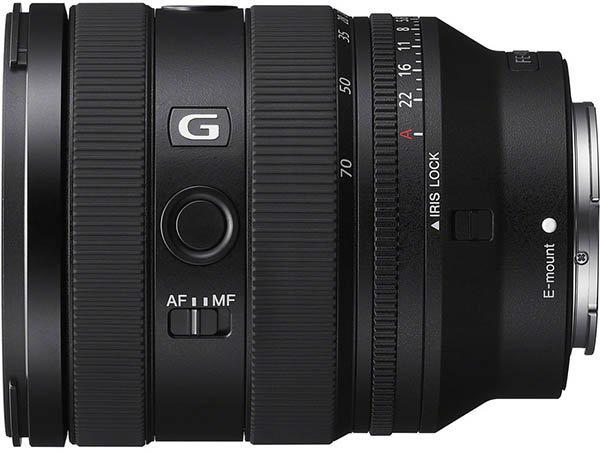
Weighing in at only 17.3 oz. / 488 g the Sony FE 20-70mm F4 G zoom lens is a great choice for the Sony A7 III.
With a very useful focal length of 20-70mm and a maximum aperture of F4, this lens is a great choice for travel, landscape and urban photography.
This introducing video from Sony is a great way to learn a little more about this lens.
This lens is constructed of 16 elements in 13 groups and is extremely well built. It’s also very well sealed against dust and moisture.
On the lens itself you will find two focus hold buttons that can be customized, an AF on/off switch, an aperture ring and a click on/off switch for the aperture ring.
The minimum focus distances is 25cm (9.8″) at 70mm which gives a very high 0.39x magnification.
Two XD (extreme dynamic) Linear Motors provide high thrust for fast, quiet, smooth focus drive. Compared to the older SEL2470Z lens there’s a 60% increase in AF speed, and tracking performance has been improved by up to 2 times.
This lens also supports the breathing compensation function with supported cameras.
Key Specs
| Model Name: | SEL2070G |
| Format: | 35 mm full frame |
| Focal Length (mm): | 20-70 mm |
| Angle of View (35 mm): | 94°-34° |
| Maximum Aperture: | F4 |
| Minimum Aperture: | F22 |
| Lens Groups / Elements: | 13–16 |
| Aperture Blades: | 9 circular |
| Minimum Focusing Distance: | 0.3(W)-0.25(T) (AF) 0.25 (MF) |
| Maximum Magnification Ratio: | 0.39x |
| Lens Image Stabilization: | No |
| Filter Diameter: | 72 mm |
| Diameter: | 3-1/8″ / 78.7 mm |
| Length: | 4″ / 99 mm |
| Weight: | 17.3 oz. / 488 g |
Pros
- Compact size and low weight
- Well built and weather sealed
- Very sharp in the center and mid-frame throughout the zoom range
- Fast and accurate autofocus
- Minimal focus breathing
- Low vignette
- Lood flare resistance
- Low aberrations
Cons
- Strong barrel distortion at 20mm
- Corners are a little soft wide open at 20mm
What’s in the Box
- Sony FE 20-70mm F4 G lens
- Hood (model): ALC-SH174
- Lens front cap: ALC-F72S
- Lens rear cap: ALC-R1EM
Review
To learn more about the Sony FE 20-70mm F4 G lens I’d recommending watching this excellent review from Dustin Abbott.
4. Sony FE 24-70mm F2.8 GM II
The Sony FE 24-70mm F2.8 GM II is one of the very few zoom lenses that can keep up optically with many of the best prime lenses.
Constructed from 20 elements in 15 groups, this is also a very well built and weather sealed lens. The 11 bladed circular aperture helps to create a silky smooth bokeh that will really make your subjects pop.
Four of Sony’s original XD (extreme dynamic) Linear Motors help to achieve very high autofocus precision and approximately 2x better tracking performance while zooming than the previous Mark I lens.
Weighing just 24.6 oz (695 g) this updated Mark II lens is an incredible 6.74 oz (191 g) lighter than its predecessor the Mark I.
On the lens body itself you’ll find two customizable focus hold buttons, a separate focus, zoom and de-clickable aperture ring, an iris lock switch, AF/MF switch and a zoom smoothness switch.
Sharpness is outstanding throughout the entire zoom range at all apertures and chromatic aberrations are well controlled too.
Whether shooting landscapes, weddings, sports, or portraits, this lens will handle pretty much everything that you can possibly throw at it and more.
I don’t own this lens myself yet, but if I win the lottery it would be one of my first purchases.
Key Specs
| Model Name: | SEL2470GM2 |
| Format: | 35 mm full frame |
| Focal Length (mm): | 24-70 mm |
| Angle of View (35 mm): | 84°-34° |
| Maximum Aperture: | F2.8 |
| Minimum Aperture: | F22 |
| Lens Groups / Elements: | 15-20 |
| Aperture Blades: | 11 circular |
| Minimum Focusing Distance: | 0.21 ft. (W)-0.3 ft. (T) 0.69 m (W)-0.99 m (T) |
| Maximum Magnification Ratio: | 0.32 x |
| Lens Image Stabilization: | No |
| Filter Diameter: | 82 |
| Diameter: | 3-1/2″ / 87.8 mm |
| Length: | 3-1/2″ / 119.9 mm |
| Weight: | 24.6 oz (695 g) |
Pros
- Size and weight
- Build quality and weather sealing
- Fantastic autofocus
- Excellent resolution and contrast throughout the zoom range
- Near perfect center and mid-frame sharpness
Cons
- Very expensive
- Some distortion and vignette
What’s in the Box
- Sony FE 24-70mm F2.8 GM II lens
- Lens hood: ALC-SH168
- Lens front cap: ALC-F82S
- Lens rear cap: ALC-R1EM Lens
- Case
Review
To learn more about this excellent lens I’d recommend watching this brilliant review from Gerald Undone.
5. Sony FE 24-105mm F4 G OSS
The Sony FE 24-105mm f/4 G OSS lens is an extremely versatile all-rounder that covers a very useful focus range.
This makes it a great choice for a travel lens, landscape lens or even events photography lens.
The lens is sharp from 24mm all the way up to 105mm even when you are shooting wide open at f/4. If you like MTF charts then Roger Cicala has some over at LensRentals.com.
The lens is constructed from 17 elements in 14 groups and built extremely well. The 9 bladed circular aperture helps to produce nice soft backgrounds that will help your subjects to standout.
On the lens body itself you’ll find a customizable focus hold button, separate focus and zoom rings, an AF/MF switch and a Steady Shot On/Off switch.
The autofocus is accurate, fast and virtually silent. It also has optical stabilization built into the lens.
This is one of the best if not the best 24-105 zoom lens on the market today and it would be in my bag today if I had the spare cash.
Key Specs
| Model Name: | SEL24105G |
| Format: | 35 mm full frame |
| Focal Length (mm): | 24-105 mm |
| Angle of View (35 mm): | 84°-23° |
| Maximum Aperture: | F4 |
| Minimum Aperture: | F22 |
| Lens Groups / Elements: | 14-17 |
| Aperture Blades: | 9 circular |
| Minimum Focusing Distance: | 1.25 ft (0.38 m) |
| Maximum Magnification Ratio: | 0.31x |
| Lens Image Stabilization: | Yes |
| Filter Diameter: | 77 |
| Diameter: | 3-3/8″ / 83.4 mm |
| Length: | 4-1/2″ / 113.3 mm |
| Weight: | 23.4 oz (663 g) |
Pros
- Useful focal range
- Excellent sharpness across the frame
- Chromatic aberrations and flare well controlled
- Quiet and fast autofocus
Cons
- Expensive
- No zoom lock switch
What’s in the Box
- Sony FE 24-105mm F4 G OSS lens
- Lens hood: ALC-SH152
- Lens front cap: ALC-F77S
- Lens rear cap: ALC-R1EM
- Case
Review
To learn more about the Sony FE 24-105mm F4 G OSS lens I’d recommend this in-depth review by Dustin Abbott.
6. Tamron 28-75mm F2.8 Di III VXD G2
Tamron enjoyed so much success with their 28-75mm F2.8 Di III RXD lens that they decided to introduce a Mark II version sooner rather than later.
It appears that Tamron is trying very hard not to tread on Sony’s toes my introducing a unique 28-75mm focal length instead of going with the standard 24-70.
The lens is constructed of 17 elements in 5 groups and there’s a 9 bladed circular aperture. Despite the very attractive price this lens is still extremely well built, it’s also weather sealed.
It shares the same 67 mm filter thread like many of Tamron’s other Sony E-mount lenses, which saves you the trouble and cost of purchasing multiple filters.
The lens delivers a very strong optical performance throughout zoom range, there’s also excellent contrast and control of chromatic aberrations.
The VXD focus motor is both fast and quiet. However, like with many of Tamron’s lenses there is no stabilization built into the lens so you’ll need to rely on your cameras IBIS (in-body stabilization). Thankfully the Sony A7III does have IBIS which offers 5 stops of stabilization.
If you are looking for a more affordable alternative to the rather expensive Sony 24-70 F2.8 GM II lens then this is the lens to take a much closer look at.
Key Specs
| Model Name: | A063S |
| Format: | 35 mm full frame |
| Focal Length (mm): | 28-75 mm |
| Angle of View (35 mm): | 75°23′-32°11′ |
| Maximum Aperture: | F2.8 |
| Minimum Aperture: | F22 |
| Lens Groups / Elements: | 5-17 |
| Aperture Blades: | 9 circular |
| Minimum Focusing Distance: | 0.59 ft / 0.18 m (wide angle), 1.25 ft / 0.38 m (telephoto) |
| Maximum Magnification Ratio: | 1:2.7 (Wide angle), 1:4,1 (Telephoto) |
| Lens Image Stabilization: | No |
| Filter Diameter: | 67 mm |
| Diameter: | 3.10″ / 78.8 mm |
| Length: | 4.63″ / 117.6 mm |
| Weight: | 19.05 oz (540 g) |
Pros
- Very good build quality and handling
- Advanced weather sealing with 8 seal points
- Fast and quiet VXD focus motor
- Strong optical performance throughout zoom range
- Exceptional contrast
- Excellent control of chromatic aberrations
- Nice looking bokeh
- Price
Cons
- Limited 28mm wide-end
- A little color fringing
What’s in the Box
- Tamron 28-75mm F2.8 Di III VXD G2 lens
- Lens cap
- Lens hood
Review
To learn more about the Tamron 28-75mm F2.8 Di III VXD G2 lens I’d strongly recommend watching this review from Chris and Jordan at DPReview.
7. Sony FE 85mm F1.4 GM II
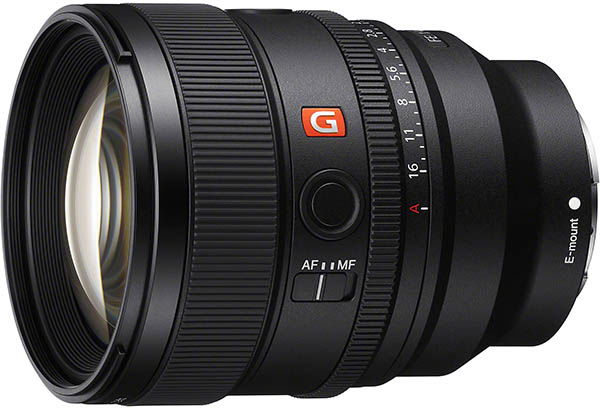
The Sony FE 85mm F1.4 GM Mark II lens features a fast maximum aperture of f/1.4 in a compact, lightweight, and weather-sealed body.
If you are searching for the best portrait lens for your A7 III then this is it.
The new Mark II features an improved construction, consisting of 11 groups and 14 elements, including two ED (Extra-low Dispersion) glass elements that help minimize axial chromatic aberration while maximizing clarity and color.
Sony’s Nano AR Coating II suppresses flare and ghosting that can cause flare and ghosting, enhancing overall image quality.
The 11-blade circular aperture excels at creating beautifully rounded bokeh, helping to make your subjects stand out.
The new Mark II lens weighs in at 22.7 oz. / 642 g vs 28.9 oz. / 820 g for the Mark I, making it 6.28 oz. / 178 g lighter than its predecessor.
The lens features 2 XD (extreme dynamic) linear motors that make the new Mark II lens up to 3x faster than the previous model. Moving subject tracking is also improved by as much as 7x.
On the lens body you’ll find 2 customizable focus hold buttons , an AF/MF switch, an independent aperture ring and Linear Response MF focus ring.
The FE 85mm F1.4 GM Mark II offers excellent sharpness wide open across the frame, low chromatic aberrations, impressive flare resistance, and minimal focus breathing.
You’ll find sample images taken with this lens in our Sony FE 85mm F1.4 GM II Image Thread over on our forum.
Key Specs
| Model Name: | SEL85F14GM2 |
| Format: | 35 mm full frame |
| Focal Length (mm): | 85 mm |
| Angle of View (35 mm): | 29° |
| Maximum Aperture: | F1.4 |
| Minimum Aperture: | F16 |
| Lens Groups / Elements: | 11 / 14 |
| Aperture Blades: | 11 circular |
| Minimum Focusing Distance: | AF 0.85 m, MF 0.8 m |
| Maximum Magnification Ratio: | AF 0.11x, MF 0.12x |
| Lens Image Stabilization: | No |
| Filter Diameter: | 77mm |
| Diameter: | 3.33 ” / 84.7 mm |
| Length: | 4.22 ” / 107.3 mm |
| Weight: | 22.7 oz. / 642 g |
Pros
- Well built and weather sealed
- Extremely fast, accurate and quiet autofocus
- Low focus breathing
- Extremely sharp wide open
- No fringing
- Low vignette and distortion
- Good flare resistance
- Lovely bokeh
Cons
- Expensive
What’s in the Box
- Sony FE 85mm f/1.4 GM II Lens
- Sony ALC-F77S 77mm Front Lens Cap
- Sony ALC-R1EM Rear Lens Cap
- Sony ALC-SH150 Lens Hood
- Padded Lens Case
Review
If you’d like to learn more about the Sony FE 85mm F1.4 GM II lens then this review from Gerald Undone is worth taking the time to watch.
Check Price & Buyer Reviews: Sony FE 85mm F1.4 GM II
At: B&H Photo | Amazon
8. Sony FE 90mm F2.8 Macro G OSS
Despite being called a macro lens, the Sony FE 90mm f/2.8 Macro G OSS lens is also an excellent portrait lens and one of the sharpest lenses that Sony has ever built.
DxOMark reviewed this lens and said that its outstanding. It also scored higher marks than both the Canon and Nikon equivalents.
It is very hard to find fault with this lens but if I’m being very picky then AF performance could be faster and the manual focus ring adjustments could be finer for more precision.
The lens is constructed from 15 elements in 11 groups and has a 9 bladed circular aperture.
Being a macro lens it offers a magnification ratio of 1.0x and a minimum focussing distance of 0.92 ft (0.28 m). This lens also has optical stabilization built in.
For shooting portraits this lens is ridiculously sharp. So if you don’t want to show every spot, blemish and wrinkle on your model this lens probably shouldn’t be your first choice for portrait work.
Hopefully my mum won’t mind me posting this photo of her 🙂

If you are looking for a dedicated macro lens, or a lens that can combine both macro and portrait photography roles, then look no further than the 90mm F2.8 Macro G OSS lens.
I own this lens myself and love using it for macro work and the odd portrait.
Key Specs
| Model Name: | SEL90M28G |
| Format: | 35 mm full frame |
| Focal Length (mm): | 90 mm |
| Angle of View (35 mm): | 27° |
| Maximum Aperture: | F2.8 |
| Minimum Aperture: | F22 |
| Lens Groups / Elements: | 11/15 |
| Aperture Blades: | 9 circular |
| Minimum Focusing Distance: | 0.92 ft (0.28 m) |
| Maximum Magnification Ratio: | 1.0x |
| Lens Image Stabilization: | Yes |
| Filter Diameter: | 62 mm |
| Diameter: | 3-1/8″ / 79mm |
| Length: | 5-1/4″ / 130.5 mm |
| Weight: | 21.3 oz (602 g) |
Pros
- Incredible sharpness at all apertures
- Excellent color rendition
- Chromatic aberrations are well controlled
- very well built
- Price
Cons
- Autofocus isn’t the fastest
- Manual focus could allow for finer adjustments
What’s in the Box
- Sony FE 90mm F2.8 Macro G OSS lens
- Lens hood: ALC-SH138
- Lens front cap
- Lens rear cap
- Case
Review
If you’d like to learn more about the Sony FE 90mm F2.8 Macro G OSS lens then this review from Pav is well worth watching.
9. Sony FE 135mm F1.8 GM
Roger Cicala from LensRentals.com tested the Sony FE 135mm F1.8 GM lens and said: “This is the sharpest lens we’ve tested. Period. (At last count, that’s out of 300+ lenses tested.)
Roger isn’t the only person to praise this lens, many reviewers are saying that this is the sharpest lens that they have ever laid hands on as well.
Thankfully it’s not only sharpness where this lens shines, it also displays minimum chromatic aberrations, very low distortion and vignetting.
The autofocus motors are also extremely fast making this lens a great choice for sports and action photographers as well as portrait shooters.
Constructed from 13 elements in 10 groups with a 11 bladed circular aperture, this is a very well built and weather sealed lens.
On the lens body itself you’ll find a customizable focus hold button, separate focus and zoom rings, an aperture ring, an aperture click on/off switch, an AF/MF switch and a focus limiter switch.
There’s no stabilization built in but with a maximum aperture of F1.8 you’ll be able to increase your shutter speed and freeze the action without bumping up the ISO too much.
If this is a focus range that you shoot at often then it’s well worth taking a closer look at this lens.
Key Specs
| Model Name: | SEL135F18GM |
| Format: | 35 mm full frame |
| Focal Length (mm): | 135 mm |
| Angle of View (35 mm): | 18° |
| Maximum Aperture: | F1.8 |
| Minimum Aperture: | F22 |
| Lens Groups / Elements: | 10–13 |
| Aperture Blades: | 11 circular |
| Minimum Focusing Distance: | 2.3 ft (0.7 m) |
| Maximum Magnification Ratio: | 0.25x |
| Lens Image Stabilization: | No |
| Filter Diameter: | 82 mm |
| Diameter: | 3-5/8″ / 89.5 mm |
| Length: | 5″ / 127 mm |
| Weight: | 33.6 oz (950 g) |
Pros
- Very high build quality
- Extremely fast and accurate autofocus
- Excellent sharpness and contrast across the frame
- Lovely bokeh and color rendition
- Weather sealing
Cons
- Pretty expensive
- Prone to flare in some situations
What’s in the Box
- Sony FE 135mm F1.8 GM lens
- Hood (model): ALC-SH156
- Lens front cap: ALC-F82S
- Lens rear cap: ALC-R1EM
- Case
Review
To learn more about the Sony FE 135mm F1.8 GM I’d recommend watching this review form Dustin Abbott.
10. Sony FE 70-200mm F4 Macro G OSS Ⅱ
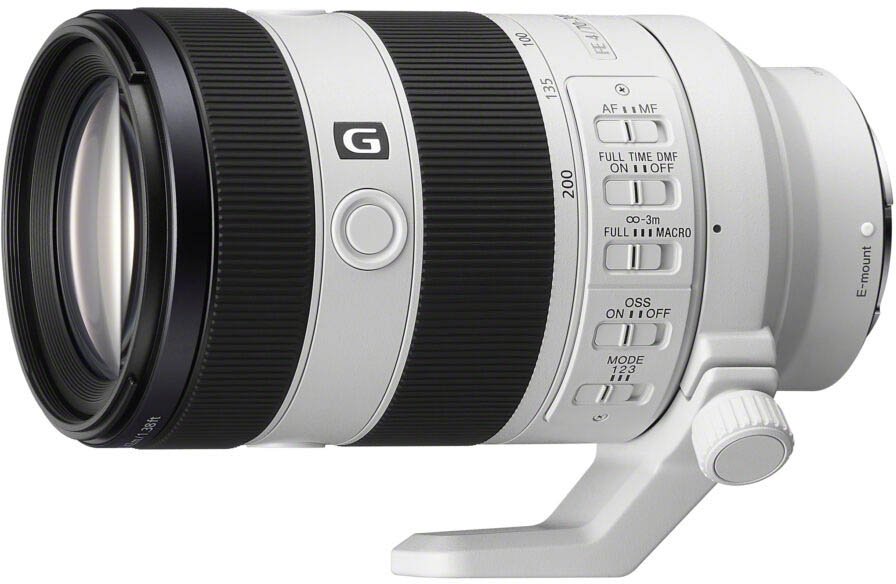
The Sony FE 70-200mm F4 Macro G OSS Ⅱ lens is the second generation of one of Sony’s earliest E-mount lenses first released in 2014.
Sony say that they have improved the AF by 20%. It’s also 15% lighter and 15% shorter that the Mark I. The 1.4x and 2x teleconverters are now also supported which were not supported with the Mark I lens.
Focus is powered by two independently moving focus groups driven by four XD ‘High thrust’ linear motors (two per group) which allow the lens to focus down to just 26 cm (10.2″).
A maximum magnification of 0.5x is the reason this lens has Macro in its name. Although not a true 1:1 macro lens if you attach the 2x teleconverter you will now have 1x magnification.
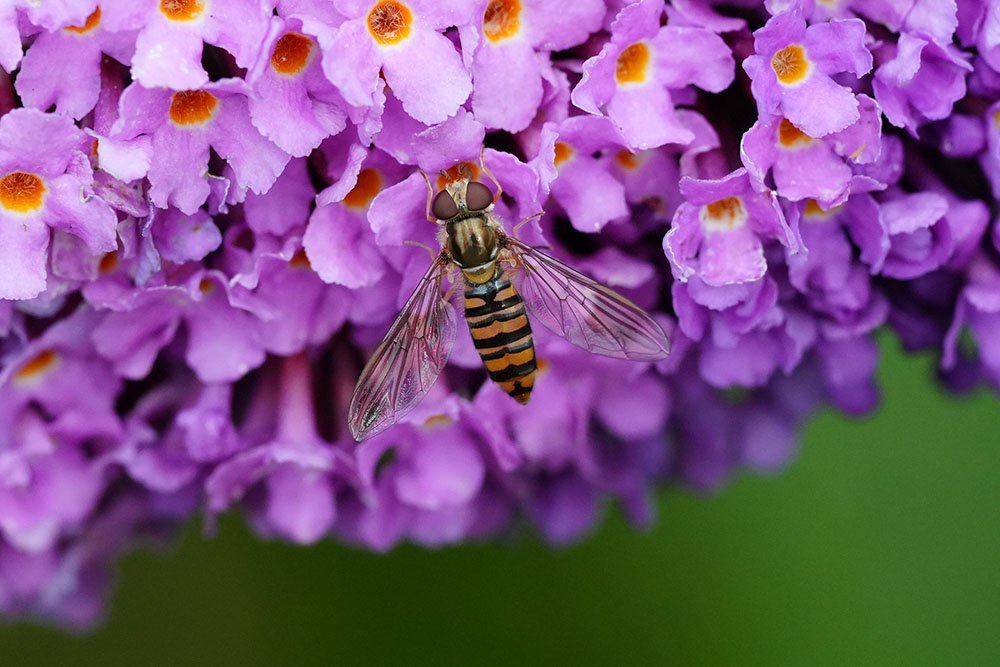
The lens is composed of 19 elements in 13 groups, including one advanced aspherical element, three extra-low dispersion (to reduce chromatic aberration), one ED aspherical element and one conventional aspherical lens.
On the lens body you’ll find independent control rings for focus and zoom. There’s a full-time DMF on/off switch, a focus-range limiter, Mode 1, Mode 2, and Mode 3 optical image stabilisation, an AF/MF switch and a zoom lock.
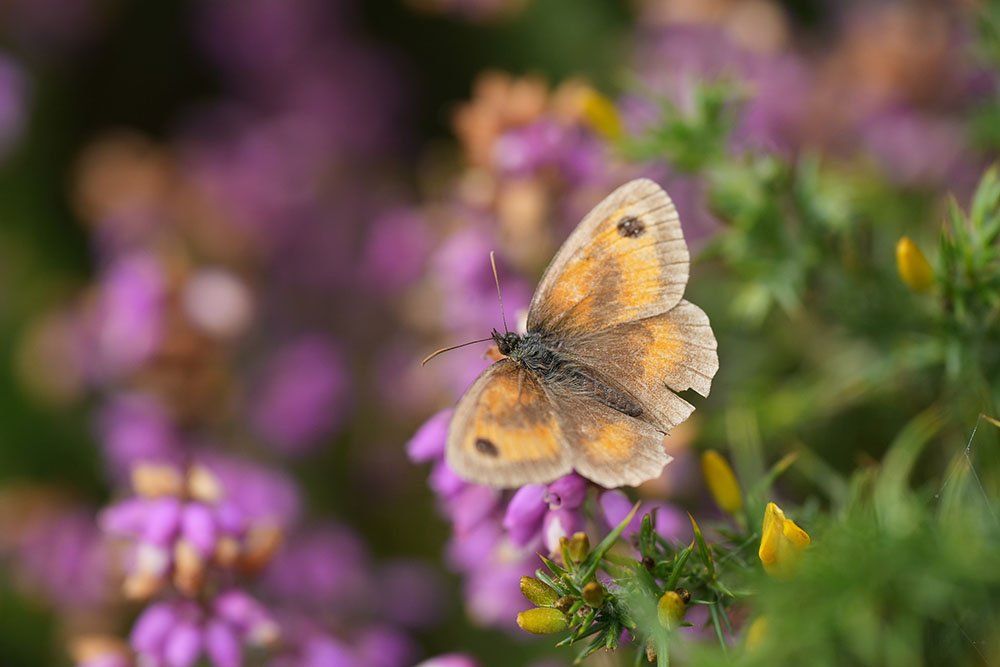
Optically the lens delivers exceptional sharpness and contrast throughout the zoom range, low distortion and vignette and stunning bokeh.
I own both the Mark I and Mark II versions of this lens and hope to put together an in-depth comparison very soon. Until then you’ll just have to take my word that’s it’s definitely worth the upgrade!
Key Specs
| Model Name: | SEL70200G2 |
| Format: | 35 mm full frame |
| Focal Length (mm): | 70-200 mm |
| Angle of View (35 mm): | 34°-12° 30′ |
| Maximum Aperture: | F4 |
| Minimum Aperture: | F22 |
| Lens Groups / Elements: | 13-19 |
| Aperture Blades: | 9 circular |
| Minimum Focusing Distance: | 0.26-0.42 m(0.86-1.38 ft) |
| Maximum Magnification Ratio: | 0.5x |
| Lens Image Stabilization: | Yes |
| Filter Diameter: | 72 mm |
| Diameter: | 3-1/4″ / 82.2 mm |
| Length: | 5-7/8″ / 149 mm |
| Weight: | 28.1 oz. / 794 g |
Pros
- Small and compact
- Good build quality and weather sealing
- Very fast and quiet autofocus motors
- Compatible with Sony’s 1.4x and 2x teleconverters
- Exceptional resolution and contrast throughout the zoom range
- Lovely bokeh
- Low distortion and vignette
- Flare resistance
- Minimal focus breathing
- Removable tripod collar
Cons
- Pincushion distortion throughout the zoom range
- Tripod foot not Arca-compatible (like all of Sony’s lenses)
- External zoom but this does make it more travel and backpack friendly
What’s in the Box
- Sony FE 70-200mm F4 Macro G OSS Ⅱ lens
- Lens hood: ALC-SH176
- Lens front cap: ALC-F72S
- Lens rear cap: ALC-R1EM
Review
If you would like to learn more about the Sony FE 70-200mm F4 Macro G OSS Ⅱ lens then I’d highly recommend this excellent review from Dustin Abbott.
11. Sony FE 70-200mm F2.8 GM OSS II
The Sony FE 70-200mm F2.8 GM OSS Mark II lens offers significant improvements over its Mark I predecessor, both optically and physically.
It still maintains the excellent internal zoom design which makes handling this lens such a pleasure, but somehow Sony has also managed to shave an incredible 15.34 oz / 435 g off the weight, which makes it around 29% lighter than the Mark I.
Four of Sony’s original XD (extreme dynamic) Linear Motors boost AF speed by up to 4x compared to the previous model. When tracking a short-distance runner, for example, tracking while zooming is improved by approx. 30% compared to the previous model.
The Mark II lens features new video features including: reduced focus breathing, focus shift when zooming, and axis shift when zooming.
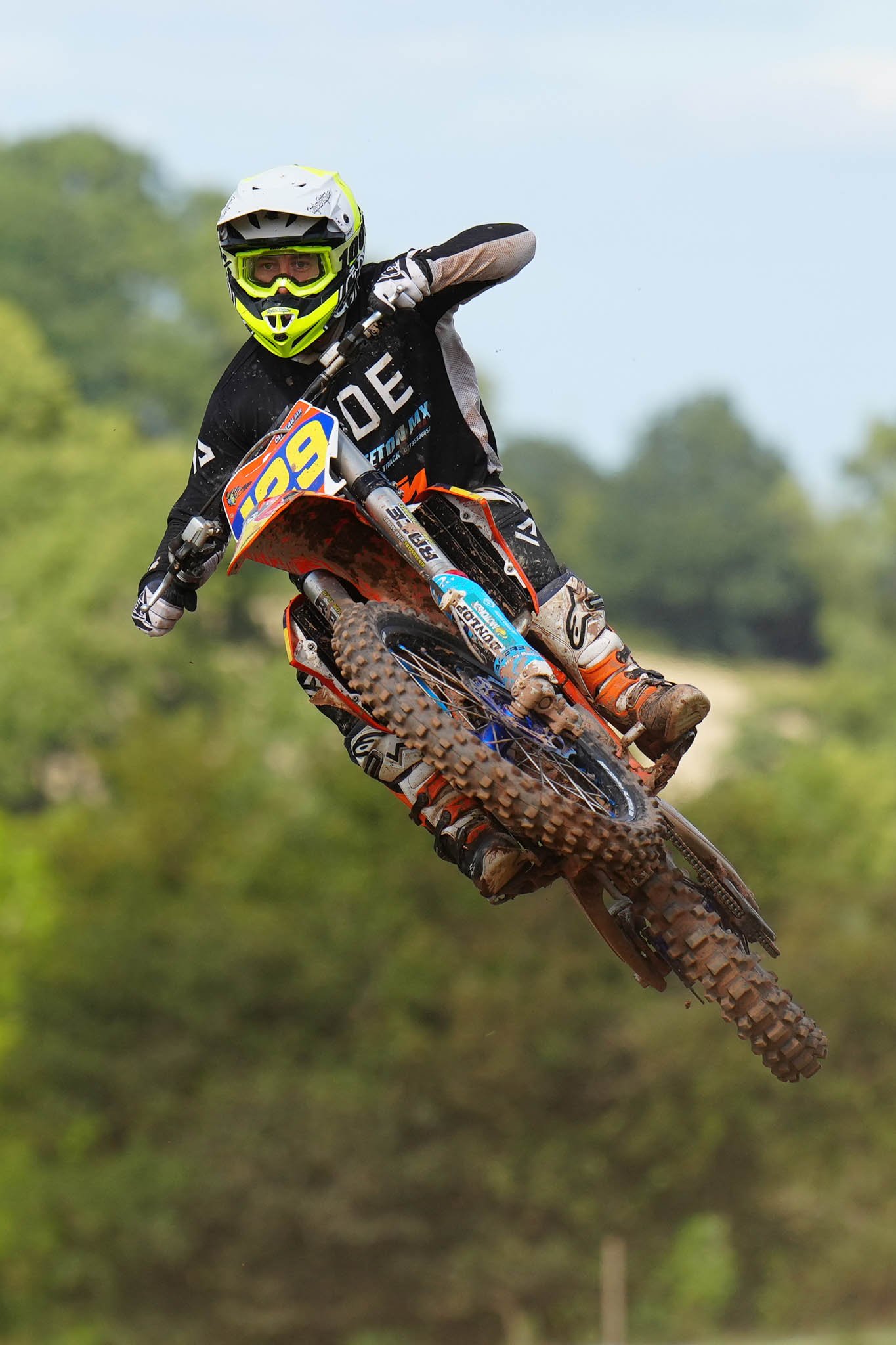
On the lens body you’ll find independent control rings for focus, zoom, aperture with a click on/off switch for the aperture ring and an iris lock. There’s also a full-time DMF on/off switch, a focus-range limiter, Mode 1, Mode 2, and Mode 3 optical image stabilisation, and AF/MF switch.
Optically the lens delivers exceptional sharpness and contrast throughout the zoom range, low distortion and vignette and stunning bokeh.
This lens also supports Sony’s 1.4x and 2x teleconverters. If you’d like to see how well it performs with the 2x teleconverter attached then head over to my Sony 100-400 vs Sony 70-200 F2.8 GM II + 2x Comparison.
I own both the Mark I and Mark II versions of this lens and can confidently say that the Mark II is a significant improvement over the Mark I and worth the extra dollars that it costs.
Key Specs
| Model Name: | SEL70200GM2 |
| Format: | 35 mm full frame |
| Focal Length (mm): | 70-200 mm |
| Angle of View (35 mm): | 34°-12° 30′ |
| Maximum Aperture: | F2.8 |
| Minimum Aperture: | F22 |
| Lens Groups / Elements: | 14-17 |
| Aperture Blades: | 11 circular |
| Minimum Focusing Distance: | 0.4 – 0.82 m (1.32 – 2.69 ft) |
| Maximum Magnification Ratio: | 0.3 x |
| Lens Image Stabilization: | Yes |
| Filter Diameter: | 77 mm |
| Diameter: | 3-1/2″ / 88 mm |
| Length: | 7-7/8″ / 200 mm |
| Weight: | 1045 g (36.9 oz.) (Without tripod mount) |
Pros
- 29% lighter than the MK 1 lens
- Great build quality and weather sealing
- Fantastic autofocus
- Compatible with Sony’s 1.4x and 2x teleconverters
- Exceptional resolution and contrast throughout the zoom range
- Lovely bokeh
- Low distortion and vignette
- Flare resistance
Cons
- Expensive
- Tripod foot not Arca-compatible
What’s in the Box
- Sony FE 70-200mm F2.8 GM OSS II lens
- Tripod collar Lens hood: ALC-SH167
- Lens front cap: ALC-F77S
- Lens rear cap: ALC-R1EM
- Lens case
Review
If you would like to learn more about the Sony FE 70-200mm F2.8 GM OSS II lens then I’d highly recommend this excellent review from Gerald Undone.
12. Tamron 70-180mm F2.8 Di III VC VXD G2
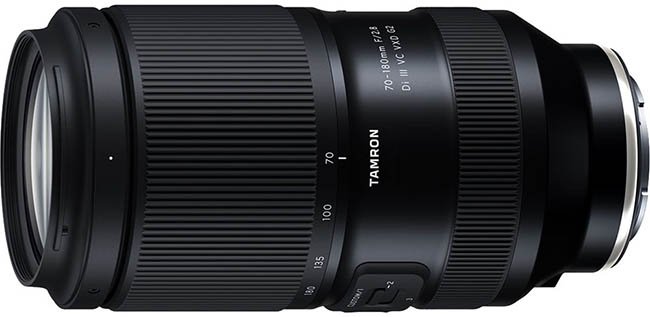
The Tamron 70-180mm F2.8 Di III VC VXD G2 lens is a great lower cost alternative to the Sony 70-200 F2.8 GM II lens.
Constructed of 20 elements in 15 groups and a 9 blade circular aperture, this lens is also weather sealed against dust and moisture.
It weighs just 30.16 oz (855 g) making it 6.70 oz / 190 g lighter than the Sony 70-200 F2.8 GM II lens.
A lot of these weight savings come down to the reduced telephoto end of 180mm compared to 200mm of the Sony lens.
The autofocus however is fast, accurate and quiet and the lens delivers very good sharpness across the frame.
On the lens body you’ll find a focus and zoom ring and a zoom lock switch. There’s also a custom button and switch that can be customized through Tamrons Lens Utility™ and the TAMRON Lens Utility Mobile™ apps.
The G2 version now features linear manual focus coupling as an option and is customizable through the apps.
The filter thread is 67 mm like many of Tamron’s E-mount lenses.
I’m also fortunate to own this G1 version of this lens that has performed exceptionally for its price. I’m not tempted to upgrade since I’m fortunate to own the Sony FE 70-200 F2.8 GM II but if I was purchasing the Tamron today the G2 would be a no brainer.
Key Specs
| Model Name: | A065S |
| Format: | 35 mm full frame |
| Focal Length (mm): | 70-180 mm |
| Angle of View (35 mm): | 34°21′-13°42′ |
| Maximum Aperture: | F2.8 |
| Minimum Aperture: | F22 |
| Lens Groups / Elements: | 15-20 |
| Aperture Blades: | 9 circular |
| Minimum Focusing Distance: | 0.3m (WIDE), 0.85m (TELE) |
| Maximum Magnification Ratio: | 1:2.6 (WIDE) , 1:4.7 (TELE) |
| Lens Image Stabilization: | Yes |
| Filter Diameter: | 67 mm |
| Diameter: | 3.27″ / 83 mm |
| Length: | 6.16″ / 156.5 mm |
| Weight: | 30.16 oz. / 855 g |
Pros
- Small and light
- Weather sealed
- Fast and accurate autofocus
- Very good sharpness across the frame
- Good color rendition
- Good chromatic aberration control
- Good bokeh
- Excellent price
Cons
- 20mm shorter focal length than the Sony 70-200 lenses
- No teleconverter support
What’s in the Box
- Tamron 70-180mm F2.8 Di III VC VXD G2 Lens for Sony E
- Tamron SP Front Lens Cap (67mm)
- Rear Lens Cap
- Lens Hood
Review
To learn more about the Tamron 70-180mm F2.8 Di III VC VXD G2 lens this review from Dustin Abbott is worth watching.
13. Sony FE 200-600mm F5.6-6.3 G OSS
The Sony FE 200-600mm F5.6-6.3 G OSS lens is an exceptional telephoto lens for wildlife and sports photographers.
With a focal range of 200-600mm and a maximum aperture of f/6.3 at 600mm this lens will help you to get closer to wildlife than ever before. If 600mm is not long enough then you can also add the 1.4x or 2.0x teleconverters.
Constructed of 24 elements in 17 groups this is a big lens and it weighs 74.7 oz (2,115 g) without tripod mount and is 318mm in length. It’s also weather sealed and has 3 mode image stabilization built-in.
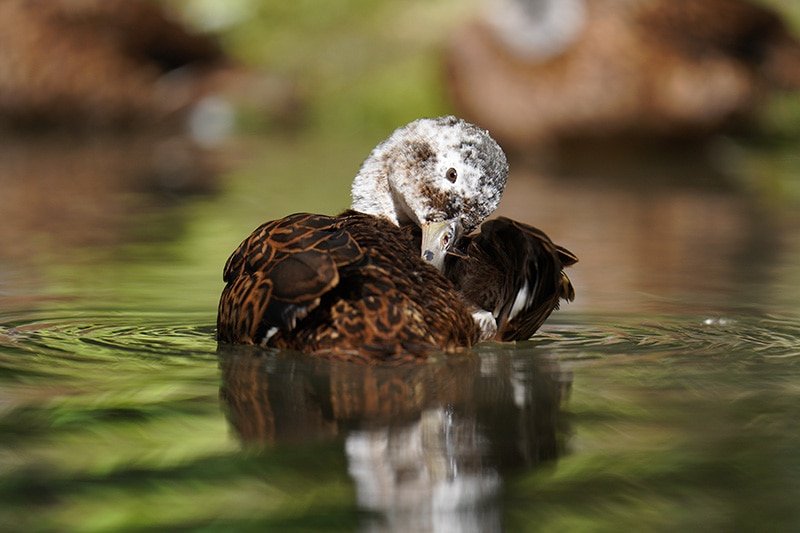
It’s an internal zoom lens which really helps with the balance and a short zoom throw makes going from 200mm to 600mm a breeze.
On the lens body you’ll find a focus and zoom ring, a focus limiter switch, AF/MF switch, Steady Shot on/off switch, mode 1/2/3 OS switch and a customizable focus hold button.
The tripod foot is also removable so you can replace it with something more practical like the Kirk LP-68 (B&H Photo) that includes an arca-swiss plate.
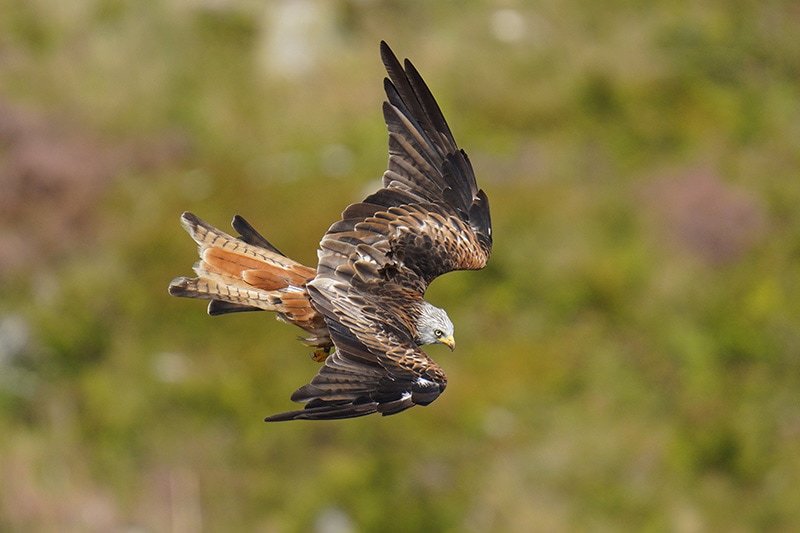
At 600mm this lens is sharper than the Sony FE 100-400 + 1.4x is at 560mm. At 400mm this lens is also a touch sharper than the 100-400 which considering it’s a G lens and not a GM lens is really quite something.
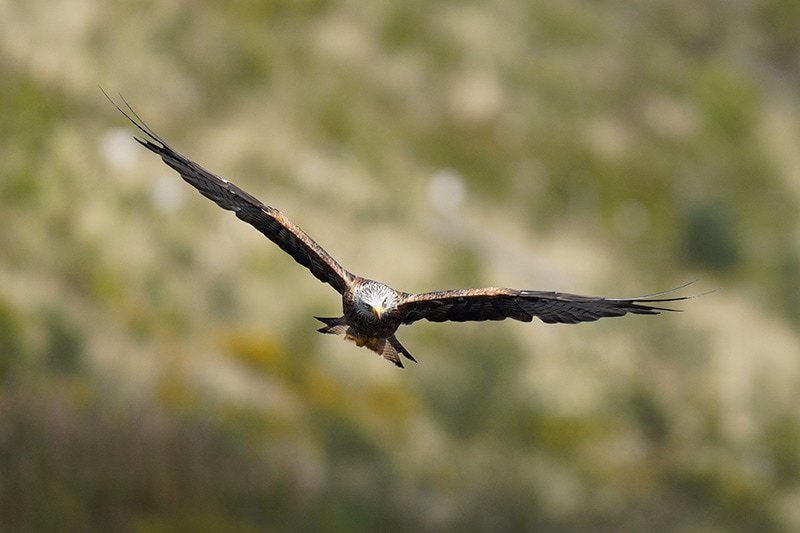
Since owning the 200-600 my 100-400 has been collecting dust, a lot of dust.
However, if you’d like to find out how this lens stacks up against the Sony FE 100-400 GM lens then head over to my 200-600 vs 100-400 comparison.
Key Specs
| Model Name: | SEL200600G |
| Format: | 35 mm full frame |
| Focal Length (mm): | 200-600 mm |
| Angle of View (35 mm): | 12°30’–4°10′ |
| Maximum Aperture: | F5.6–6.3 |
| Minimum Aperture: | F32–36 |
| Lens Groups / Elements: | 17–24 |
| Aperture Blades: | 11 circular |
| Minimum Focusing Distance: | 7.88 ft (2.4 m) |
| Maximum Magnification Ratio: | 0.2x |
| Lens Image Stabilization: | Yes (3 modes) |
| Filter Diameter: | 95 mm |
| Diameter: | 4.5″ / 114.3 mm |
| Length: | 12.625″ / 320.67 mm |
| Weight: | 74.7 oz (2,115 g) |
Pros
- Fantastic build quality and weather sealing
- Excellent handling thanks to the internal zoom design
- Very fast and accurate autofocus
- Excellent image quality
- 1.4x and 2x teleconverter support
Cons
- Large and relatively heavy
- Small tripod foot that is not arca-swiss compatible
- Some chromatic aberration when shooting wide open
What’s in the Box
- Sony FE 200-600mm F5.6-6.3 G OSS lens
- Hood (model): ALC-SH157
- Lens front cap: ALC-F95S
- Lens rear cap: ALC-R1EM
- Tripod collar
- Soft case
- Lens strap
Review
If you would like to learn more about the Sony FE 200-600mm F5.6-6.3 G OSS lens lens then this excellent review by Olle Nilsson is worth taking the time to watch.
You might also enjoy my own video of this lens where I compare the 200-600 to the Sony 100-400 with the 1.4x teleconverter for birds in flight photography. I’m also shooting with the Sony A7III.
Additional Lens Guides
Complete List of Sony E-mount Lenses & Latest Firmware
Please visit my Sony E-Mount Lenses List for a complete list of Sony E-mount lenses including third-party lenses along with the latest firmware versions.
Camera & Lens Deals
The following links should filter all of the Sony camera, lens and accessory deals currently running at Amazon and B&H Photo in the USA.
Sony A7 III Guides & Resources
Sony Lens Abbreviations
Sony does like to make use of abbreviations, so here’s a quick guide to their lens abbreviations so that you are not left scratching your head.
SEL – Sony autofocus lenses designed for the Sony E-mount mirrorless camera system.
FE – “Full-frame E-mount” lenses designed for 35mm full-frame cameras like the Sony A7III.
E – Lenses designed for Sony’s mirrorless cameras with APS-C sized sensors, like the Sony Alpha a6000, a6300, a6500.
G – “Gold” series, Sony’s line-up of high-grade lenses.
GM – “Gold Master” series, Sony’s line-up of ultra-high-grade lenses featuring the highest-quality materials.
ZA – ZA lenses are designed and manufactured by Sony in Japan, but only once the designs get approval by Carl Zeiss AG to meet their high quality standards.
OSS – Optical SteadyShot means that the lens has optical image stabilization built in to the lens body.
TC – Stands for Tele Converter and means that this particular lens is designed to increase the focal length (and reduce the maximum aperture) of a telephoto lenses.
STF – Smooth Transition Focus. Lenses that employ special APD lens groups that get thicker towards the edges and, because of that, reduce the amount of light passing through. These lenses are designed to deliver extremely smooth, silky out of focus bokeh.
Before You Go
Whichever lens you go for I’d recommend updating both the lens and camera to the latest firmware version. New firmware releases often address compatibility issues with new cameras and can also improve autofocus performance.
Do you already own any of these lenses for your Sony A7III? If you do, I’d love to hear your thoughts in the comments below.

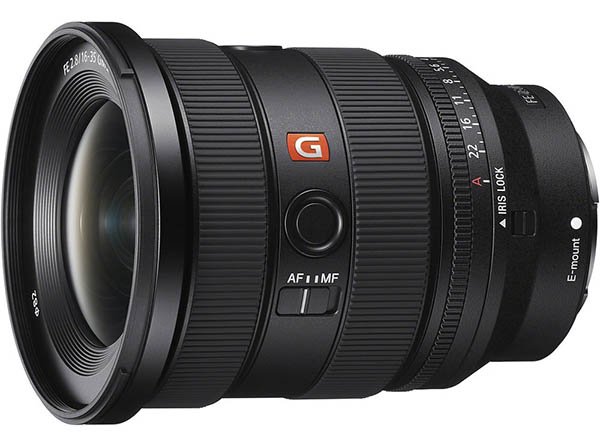
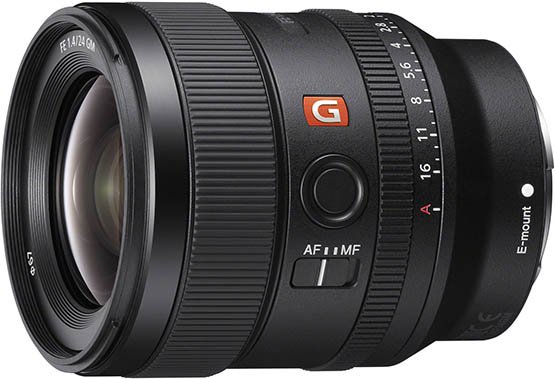
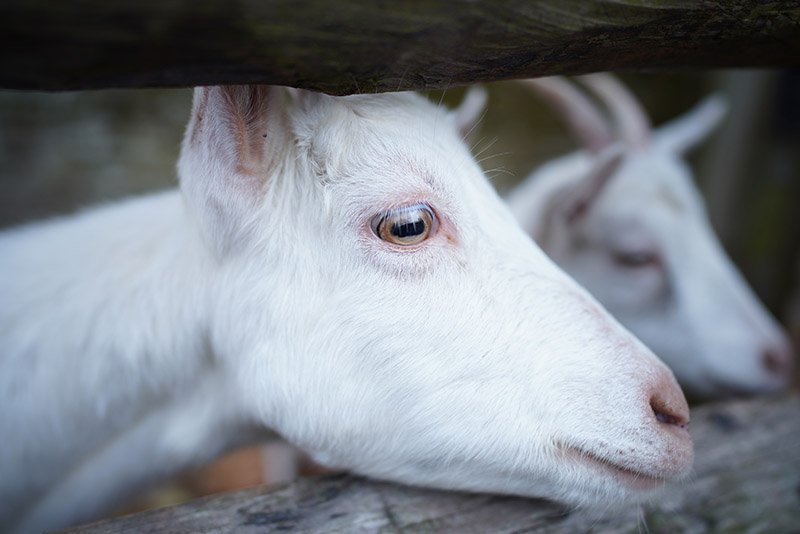
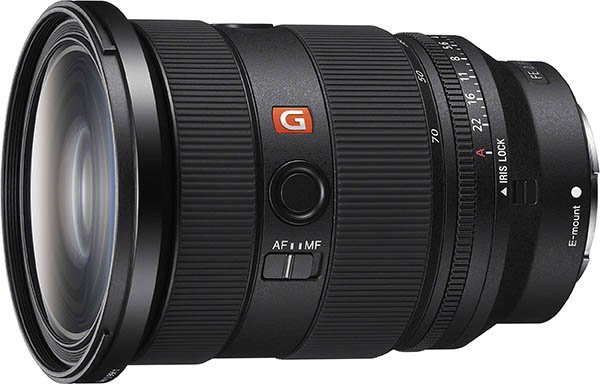
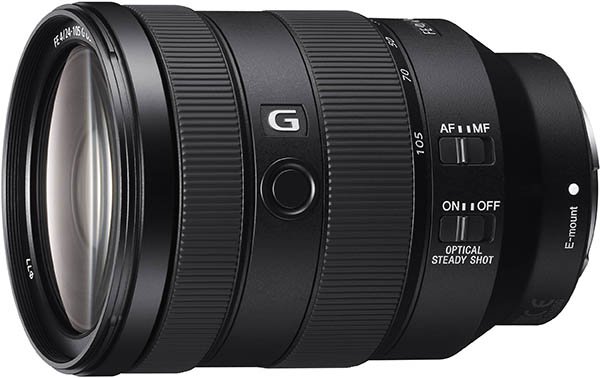
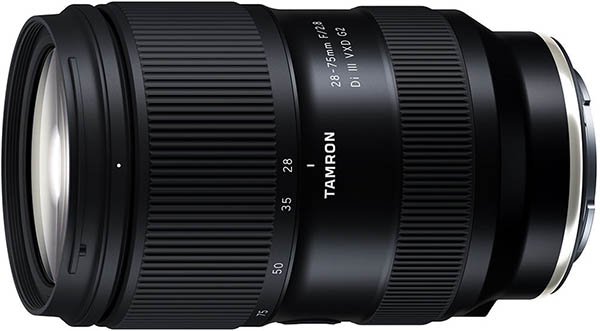
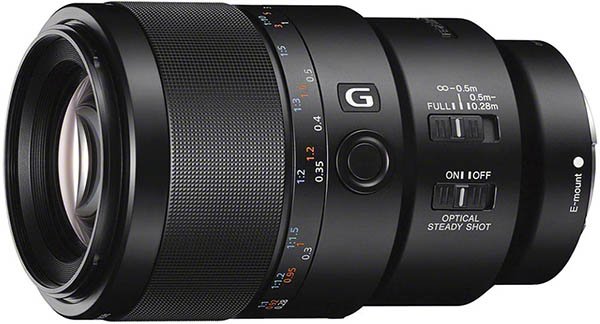
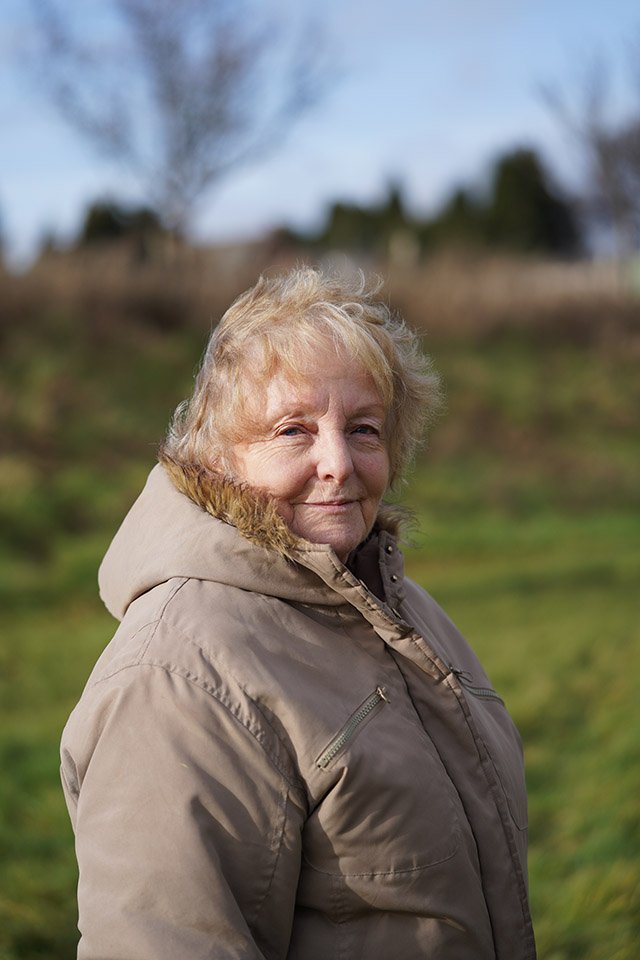
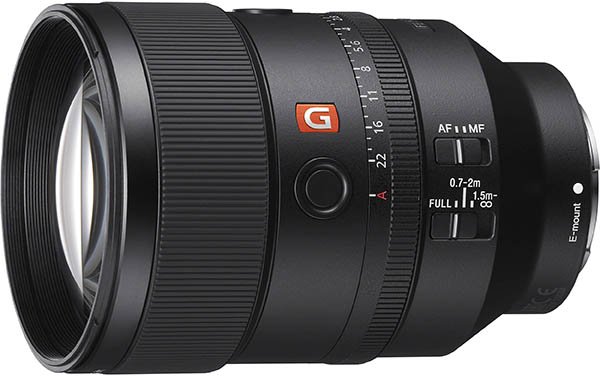
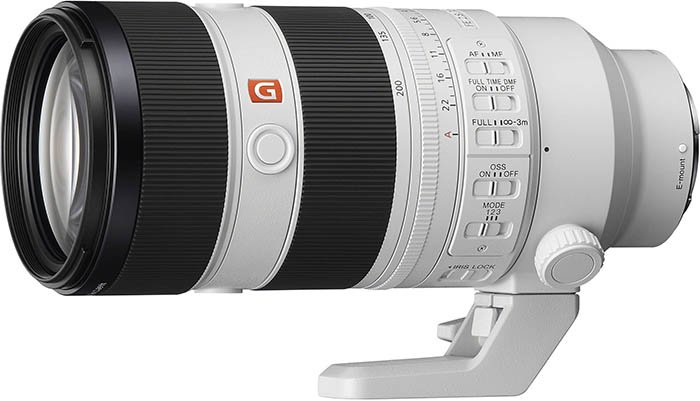
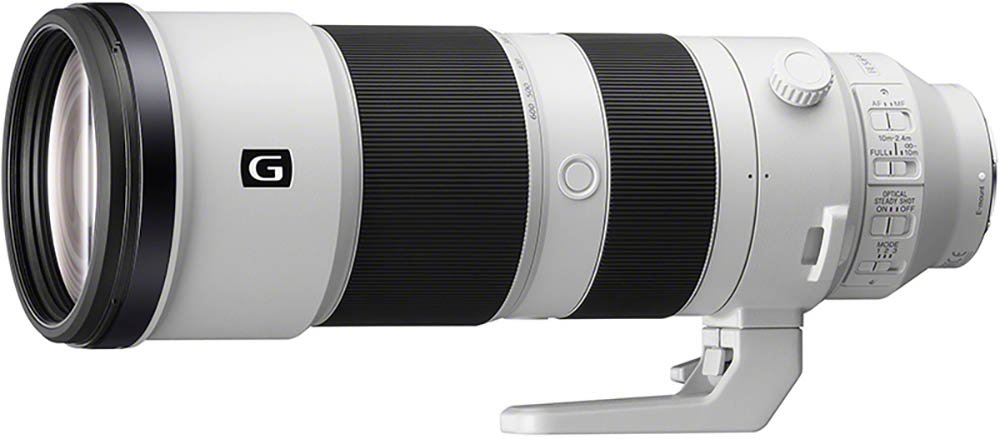
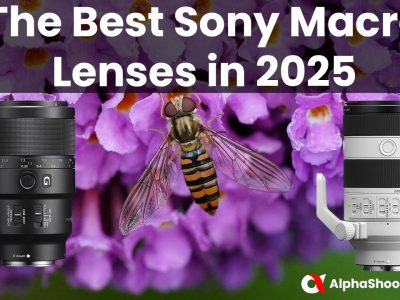
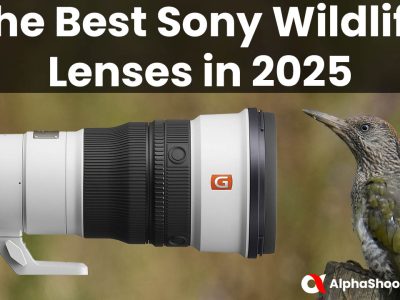
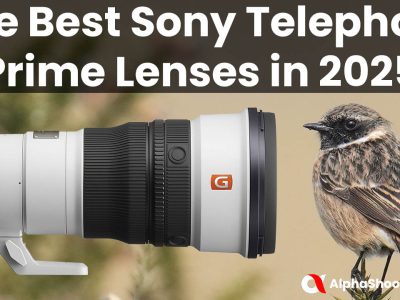
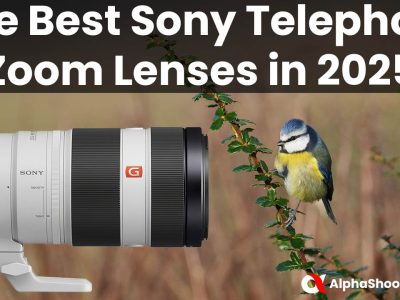
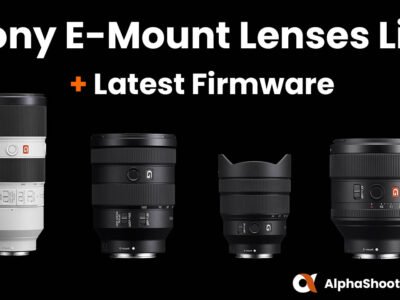
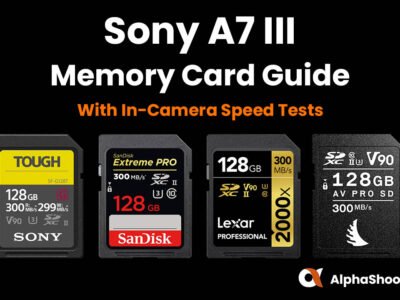
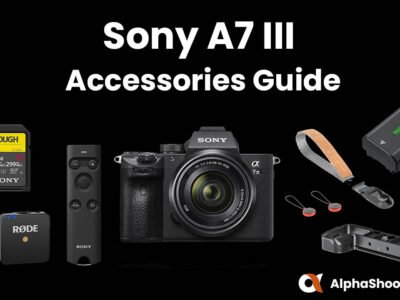
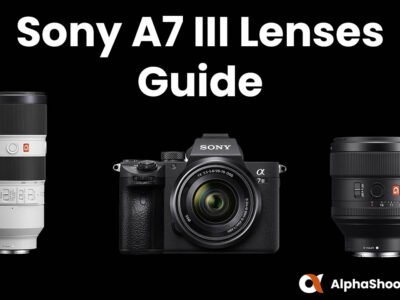
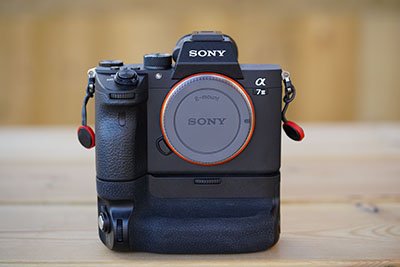
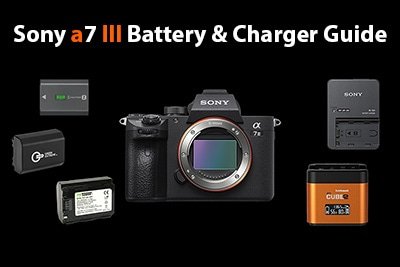
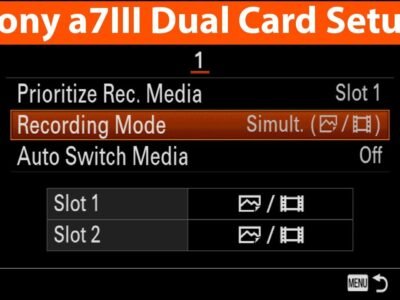
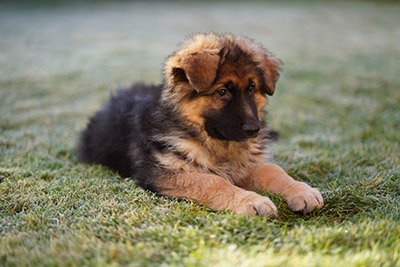
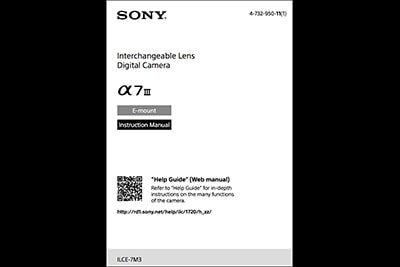


Hi Timothy,
I’m starting using a7iii and I like take sport pictures. I would like to hear your advice which lens best to take sport/action shot 100-400 or 200-600? I’ve been using 70-200 f/4 but sometimes the object is out of my range. What would you recommend for best (sharp, crisp) result? Also pls give me 2nd option. Thank you!
Hi Petty. If you take a look in our Sports Shooters Group on Facebook you’ll see people using both The Sony FE 100-400 and 200-600 for various sports. I guess it depends how close you can get to the action, will 400mm be enough or would 600mm be better for where you’d be shooting from? Also if you’ve taken a lot of photos closer to 100mm than 200mm then that probably rules out the 200-600. Both will deliver in the AF department. The 200-600 will start to weigh your arms down much sooner than the 100-400 if you shoot hand held. You could also consider the Sigma 100-400mm f5-6.3 DG DN lens for a much cheaper alternative, although the AF isn’t as fast as the native Sony lenses. There’s now also the Tamron 150-500mm F/5-6.7 Di III VC VXD to consider which has been getting good reviews, but it’s only a little cheaper than the Sony FE 200-600 and it doesn’t support teleconverters. I hope that helps a little!
Hello Timothy Mayo,
I truly enjoyed your refreshingly simplified and direct review opinions about lenses for Sony camera body users.
Photography has been the primary source of my income since 1970 including 35 years in a university classroom environment as a professor of art teaching photo— and over the last 6 decades I have owned and used a rather wide variety of photographic tools in a array of formats. Initially in the 1960s I shot telephoto images on 35mm film for the years in which I was a staff photographer with an California based international sports magazine— but since then I have long favored wide angle lenses for the bulk of my post 1970 career functioning primarily as a fine artist photographer. While I am truly drawn to, and tempted by, the IQ specifications of the “best of the best” lenses and camera bodies available, I rarely find it necessary to overspend for the type of images I create. (However I must admit that I did use legendary Leica equipment and Canon camera bodies solely with L glass during my pre-digital film years.) In 2004 when I transitioned to digital capture, I continued with Canon until the smaller body and lens sizes from the Sony line became viable and widely available. Currently I am delighted with the results I experience from utilizing an A7III in combination with a A7RIII— plus the tiny RX100MKVI for a “never leave home without” camera. Not to diminish the exceptional IQ of crop sensors I did produce many museum quality photographs with the NEX7 and A6000 series. I recently, but with strong reservations, parted with my A6500, and lenses, because that bag of equipment was gathering too much dust as compared to my A7 tools.
Perhaps I should clarify the primary underlying motivation for drafting this narrative— it is that when I read online opinions and reviews I am not always sure of the writers image making background or their real world qualifications and therefore I sometimes have reservations about the value of their opinions relative to my personal equipment upgrade interests— especially when I try to maintain a reasonable balance between a sane fiscal budget vs the lust of the dreaded gear acquisition syndrome.
As to my actual photographic needs nearly all of my work is printed at “modest” sizing on either 13″ x 19″ or 17″ x 22″ paper stock— and it must be “museum quality” as somewhat in excess of 1,450 of my photographs have been acquired by 219 museums and university museums in 45 states, Washington, DC, Australia, Canada, France, Great Britain, Ireland, Luxembourg, and Switzerland for their permanent collections of fine art. The fine art galleries that have represented my work have also required print standards equal to museum curatorial expectations.
Of the WA primes I currently favor which you did not mention I have had great success with the manual focus Voightlander 21mm f/3.5, the Sigma 24mm f/3.5, and the surprisingly compact Sony 28mm f/2. The ultra light weight Sony/Zeiss 35mm f/2 and/or the Sony 55mm f/1.8 are excellent companion lenses for a WA prime when I want a narrower field of view. On rare occasions when I do not want to switch lenses I employ the crop sensor mode on my A7RIII and the 18MP results are surprisingly good with all my prime lenses.
For the convenience category of lenses I originally purchased a Sony/Zeiss 24-70 f/4 but later replaced it with the Sony G 24-105 solely due to the rave reviews about this lens. Recently I forgave myself for my perceived lapse in judgement and repurchased the Sony/Zeiss 24-70 because it had served my purposes quite well previously— irrespective of the less than stellar online opinions, plus the lens was advertised at below the $700. mark. My “go to” WA zoom lens has always been the Sony/Zeiss 16-35 f/4. Probably 85% of my work folders containing preferred images were all produced within that range of focal lengths.
During my early years magazine staff sports photography adventures I owned and used high quality prime telephoto lenses only. They were 200, 300, 360, 400, and 600mm versions but now I only own the Sony 70-300 zoom and it serves me well when needed.
Thanks again for your clarity of information.
Very valuable information! Thankyou Robert!! Sounds like you have many many years of expertise in this area!!
Hi Timothy, I own a7mIII since 2 months and a 200-600mm, 90 mm macro, 50 mm 1.8 and a kit lens 28-70 mm .. was looking for a teleconverter and wanted to know if the 1.4x and 2X are compatible with a7mIII before I buy it… and also which all lenses above mentioned in my comment can I use these converters with.. and personally which one would you recommend as I m a beginner in wildlife and birding! Waiting for the reply!
Hi Kanchan. Both the 1.4x and 2x teleconverters are only supported with the 100-400 GM, 200-600 G, 70-200 GM, 400 F2.8 GM and 600 F4 GM lenses. I’d recommend the 1.4x with the 200-600 over the 2x which results in softer images and you also lose two stops of light instead of just one. All the best, Tim
Hi Timothy, Thank you for such a great article. This is really informative. I recently pre-ordered Sony A7c body only and I’m confused with which lense should I pick for my YouTube videos. I mostly do indoor shoots and travel videos. Initially I was planning for Sony16- 15mm F2.8, however I noticed that the lense is quite heavy for vlogging. I prefer a zoom lense with low aperture for night shoots. Question 2: I liked the Sony 24mm F1.4 prime lense, if incase I buy this lense, will this be enough for indoor shoots as well? if not, can you recommend a combination zoon lense for the Sony 24mm lense (Tamron)? I look forward to you response.
Congrats on the new a7C Rahul! I actually use the Sony FE 24mm F1.4 GM to record some of my indoor YouTube videos and it works great. It’s wide enough for my use but there’s also the FE 20mm F1.8 G if you wanted something a little wider. There’s a good comparison article between both lenses here: https://www.sonyalphalab.com/sony-fe-20mm-f-1-8-g-lens-vs-fe-24mm-f-1-4-gm-lens-lab-testing/
Hello Timothy, thanks for the post. I was wondering.. which could be a best first lenses for Sony Alpha 7 III ? I am looking for something to do street photography mainly.. I am wondering if the 50mm 1.8F could be the best choice ? or the 35mm 2.8 is better ?
Hi Martina, the 35 F2.8 is the better lens and will also allow you to capture a little more of the environment compared with the 50mm. It depends what type of street shots you are looking to capture?
What lens do you recommend for me i just jumping to the a7iii from my old d750 and want a lens for travel ( landscape ) and portrait photography
sorry for my grammar i just need an advice should i go with a two prime lenses 50mm and the 20mm or with a standard lens
Personally I’d goth with the Tamron 28-75 F2.8, or the Sigma 24-70 F2.8 if you don’t mind the extra weight and cost.
Hi Timothy,
I’m buying a Sony a7III and was wondering which lense would be the best for me. I’ll need a camera lense that can do indoor product photography and outdoor travel videos/vlogs. It’ll needs to have a nice bokeh so I can transition smoothly in between landscape and portrait. I’m attaching a gimbal so nothing too big or heavy as well where I would have trouble carrying in and out on the road. I was thinking a Sony FE 24-105mm F4 G OSS (SEL24105G), but it’s so damn expensive. I really like the versatility of that lense and because it has such a wide range of zoom, it’s really perfect for dramatic travel videos. But, I’m not sure if I want to start out with an empty body and such a high level lense as my first sony FE lense. Do you have a better mid tier recommendation that might go with what I’m looking for? Or should I really just bite the bullet because nothing in the mid tier range will perform what I’m looking for? Either way, thanks for your blog, it’s really helpful!
Hi Ash. The Sony FE 24-105 F4 does get a lot of praise and would probably suit your needs very nicely but I know it’s not a cheap lens. Next option could be the Sigma 24-70 F2.8 DG DN which is cheaper or the Tamron 28-70 F2.8 which is a little cheaper still. Hope that helps a little!
Hey! I know this is a tricky question, but what lens should I get if I’m starting out with Sony a7iii. I need a versatile and sharp lens to get started. I’m new to photography and I will mainly take portraits and food photography for online and print. Sometimes I will also take nature/landscape photos. What would you recommend that I get first? From what I understood the kit lens isn’t very good. I would like to get just one first, and after a few months add one more 🙂 thanks. All the best, Sarah.
Hi Sarah. Do you already have the kit lens? If so it’s an ok lens to get started with and you’ll soon find out where it’s holding you back. You might find that you want something wider or perhaps more reach. If I was buying just one lens and liked to take a mix of portraits, nature and landscapes then I’d probably go for the Tamron 28-75mm F2.8 Di III RXD. It has a small minimum focussing distance so will also be handy for your food photography and shooting indoors with its f/2.8 max aperture. Alternatively the Sigma 24-70mm F2.8 DG DN Art is a very nice lens, a little sharper than the Tamron but it’s also larger, heavier and more expensive. However, the minimum focussing distance of the Sigma is almost double that of the Tamron, so you won’t be able to get quite as close for food shots. Hope that helps a little!
Hey Timothy. Thanks for getting back to me 🙂 No, I don’t already have the kit lens. I’m struggling to find out whether I should just get the kit, or buy the camera house+a better lens. So you’re saying that you would just get the kit lens and take it from there? I have a job that involves portraits and food photography in a few weeks, and I just want to make sure that I can deliver great photos for it. Thanks for suggesting the lenses from Tamron and Sigma, I will read a bit about them. I can see that the lens from Tamron has an ok price. Do you think it would be a good choice to drop the kit lens and go for the Tamron lens instead? All the best, Sarah.
Hi Sarah, if you don’t already have the kit lens then personally I’d probably just buy the a7III body only and then the Tamron 28-75. I don’t think you will be disappointed with this combination. Have a nice weekend! 🙂
Surprised I didn’t see the Samyang 85mm 1.4 FE mentioned…
Hey Dimi, thanks for pointing that omission out! I’ll take a closer look at the Samyang 85 and consider including it here. All the best, Tim
Do these lenses apply the same to video shotting or is there another list of telephotos and macro lenses for that?
Hi Maria. You can use all of these lenses for video shooting but some will be more suitable depending on what you are wanting to do. Although the a7III has stabilization built in the lenses which include OSS will offer better stabilization which is usually important for video unless you are using a gimbal. If you are wanting to use a gimbal however then either a prime lens or an internally focusing lens will balance better although you can still fix a zoom lens at a set focal range. Autofocus performance and a quiet af motor is also important. I know that the 55mm F1.8 ZA is a very popular video lens but it’s going to come down to what you want to achieve. You might find this video helpful: https://youtu.be/H7m9rpp-dYw